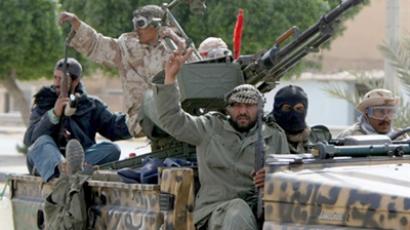Journalists behind drone death report reject CIA-backed spin machine
A recent report by the Bureau of Investigative Journalism says US drone strikes in Pakistan have killed as many as 775 civilians – including up to 170 children. Washington claims there have been no civilian deaths at all.
To assess these contradictions, RT spoke to Chris Woods, a senior reporter with the bureau.RT: What did your investigations uncover in Pakistan?Chris Woods: We’ve been looking at the subject for about a year now, and we’ve uncovered clear evidence of between 2,300 and 2,800 people killed in Pakistan. Of those, a minimum of 385 civilians, [and] we think as many as 775 civilians, were among those killed. Just to be clear, the CIA has now admitted that they have killed around 50 civilians in Pakistan during the duration of the seven years of the drone war. But they say that they haven’t killed the civilians since May of last year, and our evidence suggests entirely the contrary.RT: Where were you getting your evidence from? What were your sources?CW: Initially, we went back and looked at over 2,000 individual media reports from Pakistani, US, UK and international media looking at the strikes. And then, once we’d actually untangled that process and got the clearest idea of what had taken place, we then cross-referenced that with a host of material which included legal studies, case notes of lawyers who were fighting cases on behalf of civilians in Pakistan, leaked intelligence documents, US secret cables that were leaked by WikiLeaks earlier this year, and so on. So we tried to build up, really, as comprehensive a public view as we could of what’s actually been taking place with the CIA attacks.RT:Although you say the CIA has admitted to 50 civilian deaths, nevertheless, they did try to thwart your investigation efforts, didn’t they?CW: They were quite aggressive toward us over the last few days. Certainly, we are hearing rumors of US officials in Washington trying to cast aspersions on our study before it was even published and, for example, trying to link us to someone they were claiming was a spy in Pakistan, and also raising doubts about the validity of our research itself. And we were leaked documents by other journalists from the CIA, which were raising serious doubts on their side about our work. We have absolutely no trouble with what we put forward, and we are very robustly defending it against these attacks.RT: Drone attacks are meant to be extremely precise, aren’t they? Why are mistakes made?CW: The US has described the drones as the most precise weapon in the history of warfare, but you are still talking about missiles fired from a great distance away into housing compounds and vehicles where are the people going to be in the vicinity. And the history of the drone strikes, as we’ve seen it, reveals many, many strikes in which civilians have been killed: 114 of a reported 292 strikes have recorded civilian deaths attached to them.RT:Are there any signs that the Obama administration is learning lessons from this and trying to avoid such tragedies in the future?CW: There are some indications that civilian deaths have been dropping since 2010. Certainly, on the question of child deaths: they’ve gone from being a large numbers of children killed in strikes to individual children, really, killed by flying shrapnel, as far as we can see in the vicinity. But we have to temper that slightly. There was a huge escalation in the number of strikes last year, and reporting suffered accordingly – it’s very difficult to report from Waziristan. So while it’s indicative that civilian deaths declined, we are not 100 percent clear that that actually took place.














